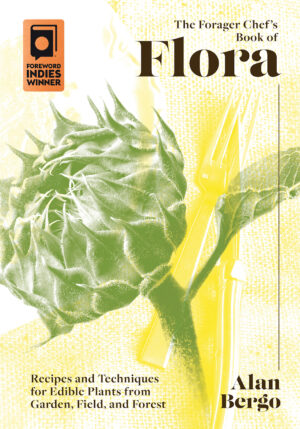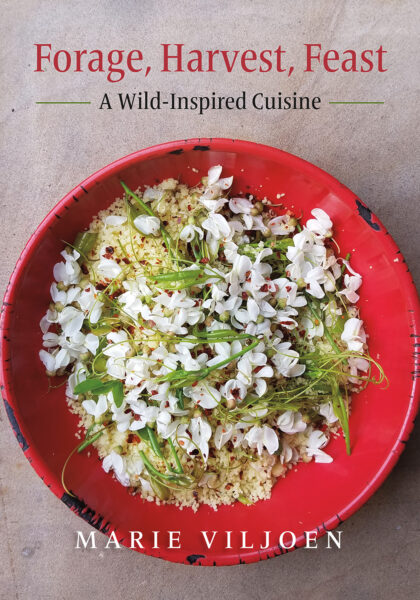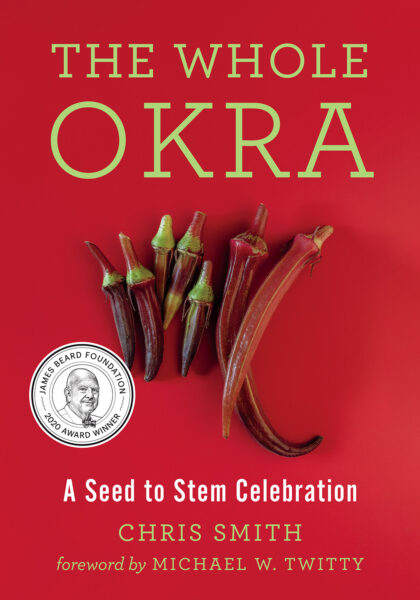Adding Some Pizazz to Your Greens
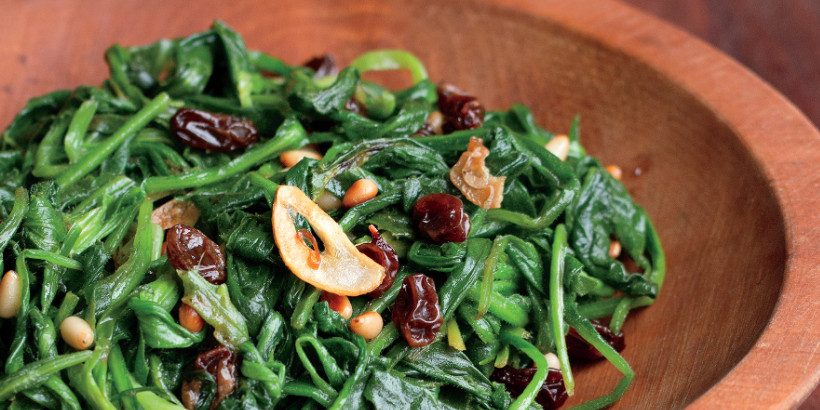
It’s difficult to come up with new and interesting recipes to spice up your greens, whether they’re store bought or foraged. In Alan Bergo’s new book The Forager Chef’s Book of Flora, he gives recipes like Greens with Garlic and Chili as well as Dotty’s Wild Green Salad to add some flair to what might otherwise be boring greens.
The following is an excerpt from The Forager Chef’s Book of Flora by Alan Bergo. It has been adapted for the web.
Greens with Garlic and Chili (Erbe Selvatiche alla Romana)
Serves 2–4 as a side
To me, this is the Italian preparation for wild greens—I’ve probably made it more than anything else in this book. The key is how the garlic is cooked: sliced—never minced or coarsely chopped. Use the recipe below the first time to get the feel for cooking the garlic; after that, forget about the recipe and channel your inner Italian grandmother. The deep flavor that the slowly cooked, gently browned slices of garlic and their oil give to a simple bowl of greens is nothing short of transformative. Pine nuts and raisins are optional; garlic and chili are not.
Ingredients:
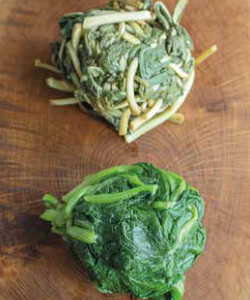
Blanched wild greens. In some places (Italy) you might see balls of cooked greens like this at your local market or farm stall. They’re space saving and convenient.
- 2 packed cups (455 g) blanched and shocked wild greens
- 1 large clove garlic
- 2 tablespoons extra-virgin olive oil, plus more to taste
- Red pepper flakes, to taste
- Kosher salt, to taste
- 1 tablespoon toasted pine nuts (optional)
- 11/2 tablespoons raisins or other dried fruit (optional)
- Fresh lemon wedges, for serving (optional)
Procedure:
Squeeze the greens dry very well. If the greens are long, consider chopping them coarsely so they can fit on a spoon. Cut the root end off the clove of garlic, then slice as thin as you can (the long way or the short way—either is fine). Heat the oil and the garlic slices in a pan (an 8-inch / 20 cm skillet is good) over medium heat until the garlic is lightly browned and aromatic, about 4 to 5 minutes. The deeper the color you can put on the garlic, the better the flavor, but be careful it doesn’t burn. Add a pinch of red pepper, stir, then add the greens. Season the greens, then stir to heat through and coat with the garlic oil. Add the pine nuts and raisins, if you’re using them, and warm through. Taste the greens: They should taste pleasantly seasoned with salt and scented with garlic. Adjust the seasoning to your taste, then serve with lemon on the side.
Dotty’s Wild Green Salad
Imagine you walk outside and make a trip around the yard, stopping here and there to clip different young greens, some sweet, some tender, choosing each leaf, stem, or flower carefully, understanding how their textures and character will dance on a plate and surprise whoever eats it with the variety of each bite. Soft, tender, or bitter greens are punctuated by intense, refreshing blasts of herbs like basil, mint, cilantro, sweet bronze fennel fronds, or tangy wood sorrel. The walk around the yard becomes a journey that whoever eats it gets to travel in each bite.
A simple salad made of pure wild greens or a combination of wild and cultivated, in my mind, is one of the highest forms the craft of foraging can take: a pinnacle of the type of intuitive, native knowledge most people will never glimpse in their life. You don’t need a recipe, but here are a few tips I think are important:
Tips:
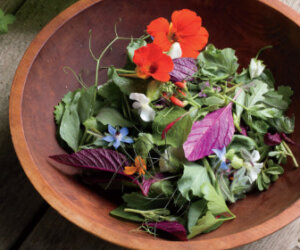
• Vinegar that’s slightly sweet helps cut through the earthy heartiness of salads like this. White balsamic and dark balsamic vinegars are my favorites, but quality vinegar or lemon juice seasoned with a touch of maple syrup or sugar works fine, too.
• Clusters of lambsquarters work hard in this. Sometimes I include up to 50 percent of them by volume, since they’re so mild and pleasant to eat.
• One of the simplest dressings is also the greatest: a high-quality vinegar or other acid, and oil, in separate bottles on the table. I never use bottled commercial dressing.
• Add dressings judiciously. We’re eating greens here, not dressing.
• Play with texture, and imagine what people will taste as they eat. Whole small leaves can be good, as can small clusters of leaves, as well as crisp things like small shoots or other parts of plants you like. A knife-and-fork salad can be fun.
• Adding thinly shaved vegetables for color and texture is good; try colorful carrots and lavender radishes (purple) or watermelon radishes (bright pink inside).
• Flowers are a crowning achievement—there isn’t a more perfect place to show them off. See a list of my favorite edible flowers on page 195.
Ingredients:
- Freshly picked young greens, the largest variety you can find
- Leaves of fresh herbs, to taste, especially basil, shiso, or cilantro, left whole if small or torn if large
- Edible flowers, such as nasturtiums, bellflower, monarda, hosta, et cetera
- Best-tasting oil available, especially extra-virgin olive, Smude’s sunflower, pumpkinseed, or another nut or seed oil
- Vinegar, especially a slightly sweet kind such as white or regular balsamic, or lemon juice
- Kosher salt and fresh-ground black pepper, to taste
Procedure:
Refresh the greens in cold water and leave for 15 minutes until they perk up. Spin the greens completely dry, or wrap gently in towels. To serve, put the greens, herbs, and flowers in a salad bowl, seasoning lightly with the oil and vinegar or lemon juice (or other dressing), salt, and pepper to taste. Try to underseason the greens to avoid overwhelming them, and taste as you go. Serve on cool plates, garnishing with extra flowers and herbs as you like.
Recommended Reads
Simple and Delicious: Fermented Mixed Wild Greens and Daikon Achar
Recent Articles
Oh, honeysuckle…how we love thee. If only there was a way to capture the sweet essence of this plant so we could enjoy it more than just in passing. Luckily, foraging and some preparation can help make that happen! Here’s a springtime recipe that tastes exactly like honeysuckle smells. The following excerpt is from Forage,…
Read MoreIntroducing…your new favorite brunch dish! This whole broccoli frittata is packed with fresh, wildcrafted flavors that are bound to help you start your day off on the right foot. The following is an excerpt from The Forager Chef’s Book of Flora by Alan Bergo. It has been adapted for the web. RECIPE: Whole Broccoli Frittata…
Read MoreWondering where to forage for greens this spring? Look no further than hedges, which serve as natural havens for wild greens and herbs! The following is an excerpt from Hedgelands by Christopher Hart. It has been adapted for the web. Food from Hedges: Salads and Greens Let’s start by looking at all the wild foods…
Read MoreThere’s a whole new world out there when it comes to koji. It doesn’t matter if you’re making bread, cheese, or ice cream, koji helps you pump up the flavor! Growing Koji in Your Own Kitchen Koji, the microbe behind the delicious, umami flavors of soy sauce, miso, fermented bean sauce, and so many of…
Read MoreWhether you’re looking to replace your end-of-the-day cocktail, relax before bed, or want something new to add to your tea, this non-alcoholic mocktail syrup base will do the trick. Delicious and all-natural, take a sip of this nightcap mocktail and feel your troubles melt away. The following is an excerpt from Herbal Formularies for Health…
Read More

